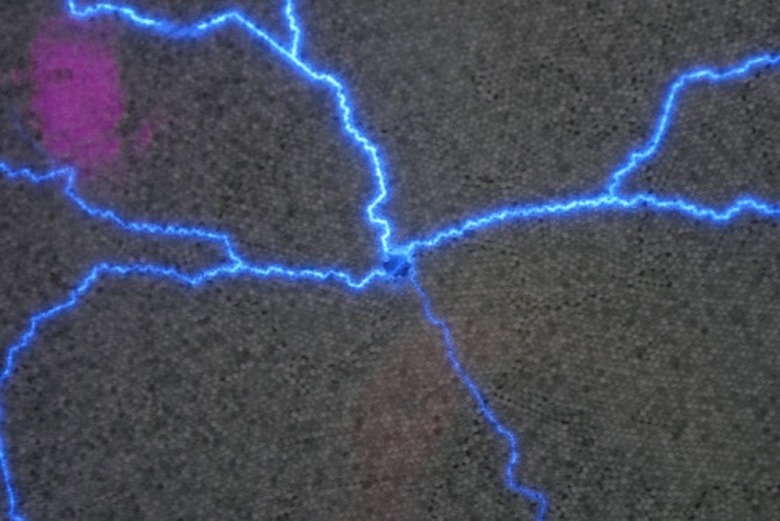How To Determine Positive Or Negative Charge
When you rub two different materials together, the friction between them produces a positive charge in one and a negative charge in the other. To determine whether one of them has a positive or negative charge, you can refer to a triboelectric series, which is a list of known materials sorted by increasing negative charge. Rubber, for example, is lower on the list than wool, so stroking rubber with wool will reliably create a negative charge in the rubber. Knowing this, and armed with an electroscope for measuring charge, you can determine whether the charge of an object is positive or negative.
Step 1
Touch an electrical ground to remove stray static charges from your body. Touch the electrode knob on the foil electroscope to ground it.
Step 2
Stroke the hard rubber with the wool firmly several times, until you can feel a strong electrostatic buildup on the rubber.
Step 3
Touch the rubber to the electroscope knob. The foil in the electroscope should separate a few millimeters.
Step 4
Touch the object to the electroscope knob and watch the foil closely. If the foil separates farther, the charge on the object is negative. If the foil comes back together, the charge is positive.
Things Needed
- Foil electroscope
- Hard rubber rod
- Wool
Cite This Article
MLA
Papiewski, John. "How To Determine Positive Or Negative Charge" sciencing.com, https://www.sciencing.com/determine-positive-negative-charge-8132493/. 24 April 2017.
APA
Papiewski, John. (2017, April 24). How To Determine Positive Or Negative Charge. sciencing.com. Retrieved from https://www.sciencing.com/determine-positive-negative-charge-8132493/
Chicago
Papiewski, John. How To Determine Positive Or Negative Charge last modified March 24, 2022. https://www.sciencing.com/determine-positive-negative-charge-8132493/
